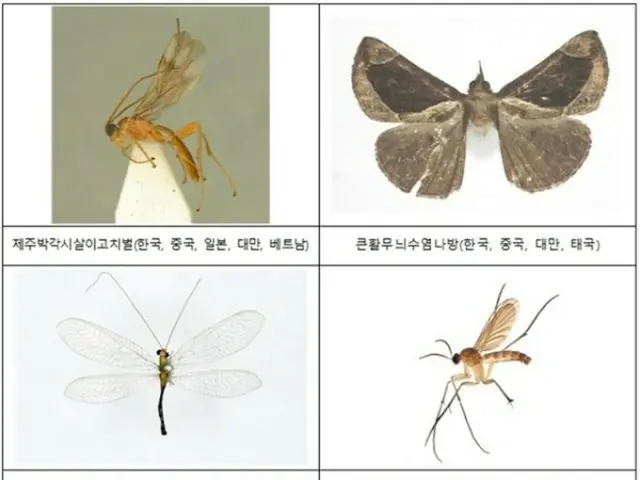The National Institute of Biological Resources announced that the rate of new and previously unrecorded subtropical insects discovered has been increasing as a result of an analysis of the current state of subtropical insects.
Based on this, we are conducting a comprehensive survey of insects on the Korean Peninsula. Since 2020, we have been analyzing the proportion of subtropical insects among new and previously unrecorded insect species newly discovered in Korea.
As a result, the proportion of subtropical insects among newly recorded insect species will be 4% (7/425 species) in 2020, 4.4% (19/425 species) in 2021, and 5% (19/325 species) in 2022.
It was found that the number of species will continue to increase, reaching 80 species in 2019, 6.5% (25/380 species) in 2023, and 10.2% (38/370 species) in 2024.
In particular, 38 previously unrecorded species that live in subtropical climates were discovered in the southern part of the Korean Peninsula last year.
Twenty-one species of insects have been spotted on Jeju Island for the first time, including the Sumatran hornet, the black-legged grasshopper, and the Krakatau lacewing.
Insects are highly sensitive to temperature changes and highly mobile, and their distribution changes due to the environment are evident.
The fact that the species that migrated north in the past are mainly found on Cheju Island, which is a border area between the subtropics and temperate zones, is analyzed as being due to the effects of climate change.
"In addition to discovering new species of insects native to Korea, we are also working to discover new species of insects that live in the subtropics," said Seo Min Hwan, director of the National Institute of Biological Resources.
"We will continue to monitor the emergence of sexual insects and provide the information necessary for the preparation of related policies in the future."
2025/02/25 20:48 KST
Copyrights(C) Herald wowkorea.jp 83

